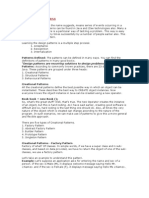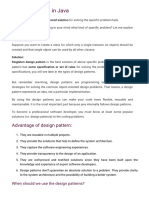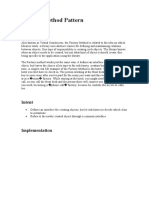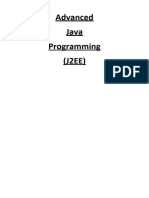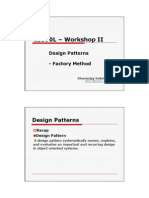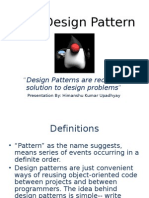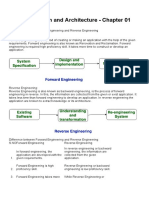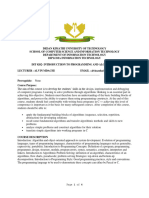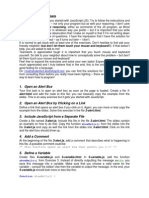0% found this document useful (0 votes)
32 views11 pagesL3 (Factory Method Design Pattern)
The document discusses the Factory Method Design Pattern, a creational pattern that centralizes the creation of objects from a specific type by choosing one of several implementations. It provides an example with a superclass 'Person' and its subclasses 'Student' and 'Teacher', demonstrating how a factory class can create instances of these subclasses. Additionally, it suggests using the Abstract Factory Design Pattern to create a calculator capable of performing addition and subtraction operations.
Uploaded by
mdtarifhasan1997Copyright
© © All Rights Reserved
We take content rights seriously. If you suspect this is your content, claim it here.
Available Formats
Download as PPTX, PDF, TXT or read online on Scribd
0% found this document useful (0 votes)
32 views11 pagesL3 (Factory Method Design Pattern)
The document discusses the Factory Method Design Pattern, a creational pattern that centralizes the creation of objects from a specific type by choosing one of several implementations. It provides an example with a superclass 'Person' and its subclasses 'Student' and 'Teacher', demonstrating how a factory class can create instances of these subclasses. Additionally, it suggests using the Abstract Factory Design Pattern to create a calculator capable of performing addition and subtraction operations.
Uploaded by
mdtarifhasan1997Copyright
© © All Rights Reserved
We take content rights seriously. If you suspect this is your content, claim it here.
Available Formats
Download as PPTX, PDF, TXT or read online on Scribd
/ 11

